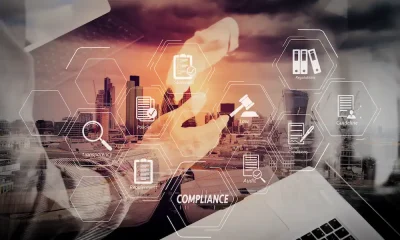Management
Does Your Disaster Recovery Plan Include These 5 Things?

Disaster can strike at any time due to natural or man-made causes. Earthquakes, tornados, floods, terrorist attacks and cyberattacks can happen in an instant and having a disaster recovery (DR) plan in place can be the difference between your business getting back up and running or having to permanently shut down.
Whether you already have a disaster recovery plan in place or not is it regularly updated, and does it include recovery strategies for multiple eventualities? If you’ve answered no to any of these questions here are five things that every DR plan should include.
DRaaS should be a consideration
This on-demand service has grown in popularity recently due to providers making it easier and more economical to implement, this has made it a far more appealing disaster recover option for many businesses.
There are numerous providers in the market so it’s important to vet their recovery of data and workflows. For example, DRaaS from Sungard AS has particularly stringent procedures in place to ensure accurate and rapid data recovery.
Analyse your threats and create individual recovery strategies
It’s no good having a DR plan that only caters to one scenario, the truth is that a business can be hit by any kind of attack and needs to be prepared to deal with it. The ideal DR plan clearly states the recovery plan for every type of scenario that could possibly happen, no matter how unlikely it might seem.
That being said, every business is likely to have certain scenarios that are more likely to happen than others. It’s best to prioritize these and anticipate what procedures need to be in place.
Business impact analysis (BIA) is essential
Every major IT system that your business operates should have a business impact analysis conducted, this is the best way to identify and evaluate the potential impact of a disaster to your business.
A good BIA should consider lost sales and income, increased expenses to get back up and running, regulatory fines and customer dissatisfaction or defection among other things. A great resource for BIA information is Ready.gov.
Keep your disaster recovery plan up-to-date
Has your DR plan been updated since you implemented a new internal system or had a major software update? If you answered no, your DR plan needs updating!
A common mistake many businesses make is to change key technologies, tools or processes without updating their DR plan which will be based on previous assumptions. Your DR plan isn’t complete or useful unless it takes into account new developments.
Establish communication channels
Clear and transparent communication both internally and externally is vital as it will help to maintain your reputation and trust with stakeholders.
If you’re in need of an emergency communications plan template this is a good place to start. Having a solid DR plan in place will pay dividends if disaster should ever strike.






